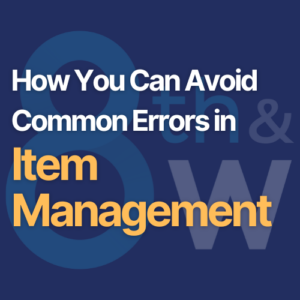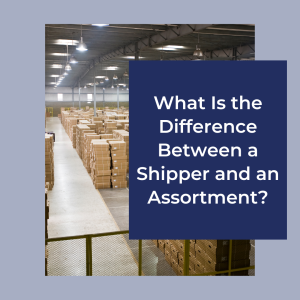Retailers and suppliers recognize the significance of the supply chain. Getting goods to customers quickly and smoothly whether purchased in-store or on-line is a worthy goal. To do that, achieving better inventory control is a must.
For Walmart, RFID (Radio Frequency Identification) offers unparalleled inventory management because it clears up discrepancies between what the electronic records show as inventory and what the actual inventory is. Overstocks and out-of-stocks decrease, and customer satisfaction increases!
What Is RFID Technology?
RFID is a technology that uses radio waves to identify a tagged object. It’s used in several commercial and industrial applications — from tracking items in a supply chain to tracking books checked out of the library.
It allows every single item to be tracked and tells where that item is located and also how many such items are available for purchase. This really helps manage inventory, and it’s done with very little human intervention.
If you supply Walmart with a product that falls under its growing list of items requiring an RFID tag, you have to place an approved RFID tag on each item before you ship it to a Walmart store or distribution center.
Why Is Walmart Using RFID?
Because RFID is highly effective.
RFID allows Walmart to manage its inventory better. Its stores and distribution centers handle huge amounts of product, so even small errors can cost thousands of dollars.
Walmart RFID improves managing that inventory and reduces errors like the bullwhip effect (when small swings in demand erroneously become big fluctuations).
It also lets customers know if something is in stock and where it’s located in the store —and that makes Walmart customers happier!
What Additional Walmart Categories Are Affected by the 2024 RFID Mandate?
Required RFID labels are added to more and more Walmart departments because the system offers so many advantages. Almost all of General Merchandise now requires RFID labels.
- Special Buys, Non-Basic, and Seasonal merchandise need to follow the same guidelines as other department items.
- Seasonal (18), Horticulture (56), and Celebration (67) as well as third-party WFS items are not required to follow the new mandate.
- Items that DSV suppliers ship directly to customers are also exempt.
How Does RFID Work?
As a tool to manage inventory, an RFID tag or label is placed on an item so it can do three things:
- Identify the item.
- Collect data about the item (its location, specifications, etc.).
- Transfer information to a database.
A wireless technology, RFID tags or labels are encoded with digital data and put onto store products. The data on the tag can be read, monitored, and captured via radio waves. The data can be sent from the tag to a reader (giving accurate, real-time tracking data of inventory) and then on to a database. All of this is done with little or no human intervention.
What Are the Components of RFID?
An RFID system consists of a tag with a computer chip that’s attached to a product and contains information about it, an antenna (which is part of the tag), a reader (sometimes called a transceiver or an interrogator), and a computer database (or transponder).
The antenna and reader work together to send radio waves filled with information from the tag to a computer database. When the computer database receives its signal through the reader, it sends information back to the reader, and the reader then decodes the raw data.
- RFID Tag – One on every item, filled with data about the product.
- Antenna (part of the tag itself) – Sends data to an RFID Reader.
- RFID Reader – Forwards data to the Computer Database.
- Computer Database – Stores and evaluates the data and communicates it to other parties if needed.
There are two types of RFID readers: fixed and mobile. Fixed readers are installed in a specific place (for example, a check-out zone that reads the tags on the items in a cart). Mobile readers are handheld and can be used in aisles, at checkout, or anywhere. RFID Walmart uses both types of readers at its stores and distribution centers.
What Is the Difference Between RFID and Barcodes?
Both tools help companies track their products and store information. High-ticket suppliers often prefer RFID while some suppliers of lower-priced items and food have often been satisfied with the barcode system.
Even though the RFID system and barcode system are similar, there are some significant differences.
- RFIDs use radio waves, so there is no need for a direct line of sight as is necessary for barcodes.
- If the signal is strong, RFID can read several tags at the same time. This saves time and in turn, reduces labor costs.
- RFID tags can store information about a product’s location in the supply chain or in the store. Some are even able to locate stolen stock!
- Not only can RFID items be found in the store, restocking of the inventory is more accurate, and Online Pickup & Delivery (OPD) works better, too, giving shoppers a better experience.
- Producing barcodes costs less than producing RFID tags. However, RFID can result in great savings and more sales.
- Barcodes can store only a small amount of information. Not only can RFID tags store more information, but the information they store is more complex.
- All RFID information can be encrypted.
- Barcodes are usually printed on paper or adhesive which can easily be damaged and thus unusable. An RFID tag is more durable and can be reused. It will stand up to harsh temperatures and rough treatment in shipping.
What Are RFID Requirements?
Suppliers who must outfit each product with an approved RFID tag before shipping need to carefully follow Walmart’s instructions. Here are some guidelines to keep in mind:
- The RFID inlay is usually embedded under or next to the UPC Barcode.
- Do not place one tag on another.
- Do not put more than one tag on a product.
- Do not fold tags on themselves.
- Do not place a tag on or next to metal.
- Do not attach a tag directly to the hanger.
- Avoid placing a tag where hangar clips might go.
- Avoid inserting a tag loosely within a package.
- The shipper case markings must include the word RFID.
For complete information about tag placement, refer to the 32-page Implementation Guideline provided by GS1.
What Are the Steps to Success a Supplier Should Follow?
- Study the Walmart specs to learn what type of RFID inlay is approved for use on their product. (Walmart has a set of inlay specifications that are performance-approved from the Auburn University RFID Lab.)
- Identify a tag supplier.
- Determine if tags will be printed in-house OR pre-encoded (work that will be done by a company able to consult in RFID).
- Locate a source for readers, equipment, and the software solution to encode the tags properly OR select a consultant.
- Send samples to Auburn-Alec for approval.*
- Once approved, tag merchandise.
* Auburn University RFID Lab’s ALEC program is to help suppliers ensure that their RFID-tagged item meets all the industry requirements. You can reach them here.
What Does RFID Mean for the Walmart Supplier?
While it’s true that RFID adds another hoop for suppliers to jump through, it also offers many pluses. It is actually a joint venture: The supplier invests in tagging, and Walmart invests in hardware, software, and labor to collect the tags data.
When the cost of RFID is compared with the positives it offers, its advantages come through loud and clear.. Walmart and RFID have proven themselves to be a winning combination.
How Specifically Can RFID Help Walmart Suppliers?
- Improves on-shelf availability.
- Produces a leaner supply chain.
- Increases replenishment efficiency.
- Results in improved store operations.
- Improved loss prevention.
- Faster checkouts.
- Allows more associate time for other tasks.
- Increases sales both in stores and online.
- Leads to a better shopping experience all around which leads to an enhanced customer experience and a more satisfied customer.
Brief History of Walmart and RFID
- 2003 – Walmart begins experimenting with RFID technology.
- 2004 – Walmart invests almost $500 million in its RFID technology.
- 2010 – Walmart announces plans to use RFID tags on individual items of clothing.
- 2020 – Walmart RFID tags are expanded to be required on all its apparel products.
- 2022 – Walmart announces expansion of RFID to home, entertainment, sporting goods, and other departments,
- 2024 – Walmart RFID Mandate expands Walmart RFID requirements further and into more departments. Walmart and radio frequency identification are here to stay.
How Can 8th & Walton Help With RFID?
If you need guidance regarding RFID, our team of experts can be a great help as well as a source of confidence. Each member of our team has worked at Walmart or been a supplier to Walmart; some have been both. We are intimately familiar with RFID and its requirements. Contact us for more information.
The Bottom Line on RFID
Walmart continues to expand its use of RFID labels and is researching ways to add labels to those few products (such as those made of metal) that are difficult to tag. The goal is to eventually have all products using RFID labels. RFID is here to stay.
Note: Don’t forget to request a FREE consultation about your RFID issues. The 8th & Walton team is here to help you.



